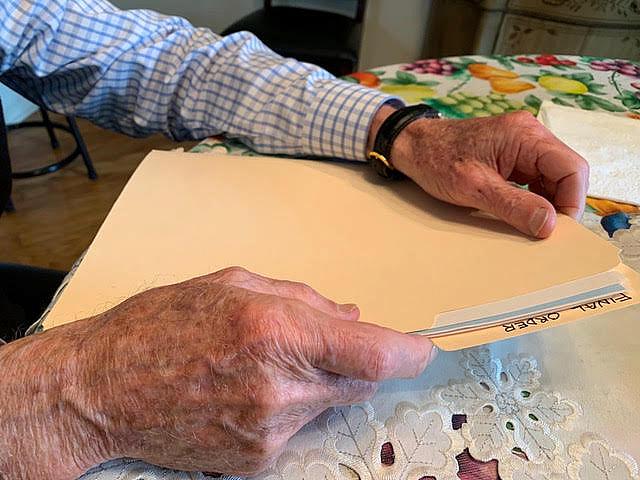Elder abuse is on the rise, but persuading seniors to share their stories is a challenge

“Nobody sees our seniors. Our homebound seniors are hidden behind closed doors.”
That’s what Tracey Hall told me in an interview. Hall is the director of volunteer services at Senior Serv, an organization that provides nutrition and care services to older adults in Orange County, California.
Hall was talking about Meals on Wheels recipients, but her comments are familiar. The statement was an echo of something I’d heard from so many others. Even older adults who aren’t behind closed doors are often ignored because ageism is so central to our culture.
It shows in the too-infrequent reporting about the growing problem of elder abuse. So, I knew I had to take it on in some small way.
With the training and support from the 2018 Data Fellowship, I looked into state numbers to see if there were the same jumps in elder abuse reports in Southern California that the World Health Organization was reporting.
I started with a three-story series, but eventually, this reporting completely realigned my health beat. Now, the health of older adults is the central mission of my reporting.
SORTING THE DATA
When I got started, California’s Adult Protective Services had Excel spreadsheets that detailed reports of abuse of elder and dependent adults by county dating back to 2005. (As of this posting, the state is listing less information.)
The data source was fairly detailed about cases of elder abuse that happen at home (another entity tracks elder abuse in facilities), but the layout of the spreadsheets made them cumbersome to read and difficult to reorganize for analysis. Some years included 400 columns or more, with odd mergers organizing sets of columns. Major changes in the organization of the data input made it impossible to line up the data by year.
Thanks to help from my mentor Cheryl Philips, who wrote code to strip the data into a useable format, I was able to sort and analyze the data. After several hours spent comparing the cells to the original spreadsheet to confirm everything was accurate, the data confirmed what we had heard from researchers: Los Angeles, Orange, San Bernardino, Riverside and Ventura Counties and the state as a whole all had sharp increases in all types of elder abuse.
Reports of abuse were up from 2005 to 2018. Throughout California, they had doubled.
This took place as the older adult population has quickly grown. According to state estimates, adults 65 and older will make up 21% of L.A. County’s more than 10 million residents by 2030. That’s almost double the representation of that demographic compared to 2010.
STIGMA AND SHAME
Shame. Stigma. Ageism. These words repeatedly popped up in conversations and expert interviews as I was looking to flesh out and contextualize the data we found.
I knew it would be tricky, but I expected to find more sources for my stories who would talk about their personal experiences with elder abuse on the record. People talk to me about all sorts of health issues, even things that are stigmatized, like addiction and sexual assault. Elder abuse was different.
Researchers who focus on elder abuse told me older adults who are abused are ashamed of what happened to them. If an older adult is victimized by a trusted family member, they don’t want to get them into trouble or lose their only caregiver.
Older adults told me their stories about being conned, manipulated, and ripped off. Going on the record, however, was too emotionally taxing for most. They were embarrassed, ashamed, and fearful of what people would think of them if their stories were on the radio or on an internet story.
Eventually, after months of reaching out to researchers, physicians, social workers, lawyers, and advocates, I finally met a source who was willing to share his story on the record. Bob did so only on the condition that we only use his first name. Of the people I spoke to, Bob had not lost the most, but the stress of being financially abused and the embarrassment that it had happened still held him back from sharing his story with his closest friends.
GETTING THE WORD OUT
The point of reporting about elder abuse is to provide a public service to Angelenos, regardless of their media habits. KPCC and LAist have a strong following. About 700,000 people listen to KPCC. More than 3,000 people read the first web story all the way through. Still, we knew that we had to do more than publish. We had to take this important information to the people who needed it.
First, we reached out to L.A.-area foreign language news organizations. Since their audiences prefer a language other than English, they would be unlikely to get the information from KPCC or LAist. I happily accepted an invitation to present my work on KIRN, a Farsi language station in the L.A. area.
Our next step was to print postcards with information about elder abuse, along with links to the first story. The cards are bilingual and include a link to a Spanish language translation of the work on our own webpage, LAist. Those cards were mailed in ZIP codes where we identified high populations of Latinos over the age of 65: Commerce, Pico Rivera and East Los Angeles.
The final step in this engagement work was to take the work directly to older adults. Our first presentation was to a group of participants in the AltaMed PACE program in El Monte. We followed the bilingual presentation with a small-group conversation about their health concerns. The off-the-record conversation will inform my future reporting on the health of seniors.

